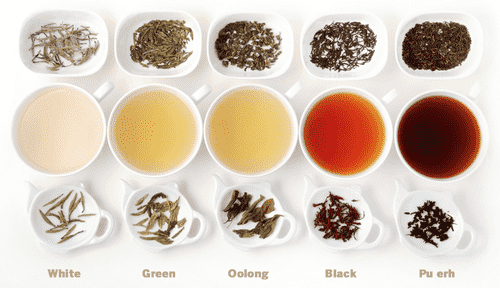The Colors of Tea: 7 Different Types of Teas
Posted on October 17 2022

There are SO many different types of teas in the world and a lifetime to discover them all. For now, I'll cover the main categories that are commonly found. Rest assured, I'll dive into the tea scene in South America soon! When starting my tea studies, it was extremely helpful to be able to categorize teas I drank into the below as it ties into the processing & oxidation levels. Since all teas come from the same leaf (camellia sinensis), it's fascinating to see how the subtle differences in harvest & processing can result in such drastic appearances in color and taste!
White Teas
Lightest teas, typically picked from early harvest, lowest caffeine. Originates from the Fujian province of China.
Examples: White Peony, Silver Tip
Green Teas
Popular in China/Japan, mild caffeine levels. Typically lightly oxidized and brews to a light green or light yellow color. Japanese green teas are steamed while Chinese teas are pan-fried after harvesting to halt oxidation.
Examples: Dragonwell, Sencha
Oolong Teas
Often rolled into balls for easier packaging. Popular in China (Wuyi) and Taiwan (Alishan Mountain). Harvested, wilted, and then undergoes 10-80% oxidation (results in different types of oolong). Color ranges from light yellow to a rich orange.
Red Teas
Distinguished from black teas since Chinese / Taiwanese reds are slightly smoother / lighter in flavor than the Black teas from the assamica variety found in India. Ranges from 80-90% oxidation. Usually a mix of assamica & sinensis.
Example: Sun Moon Lake #18
Black Teas
Full-bodied and strong flavor with plenty of caffeine, the popular choice for chai and milk teas because the flavor permeates robustly while being blended with milk. I do LOVE my chais and black milk teas, will drink all night, any night. Commonly drank in the U.K, India, Sri Lanka.
Examples: English Breakfast, Yunnan Black Tea
Pu-erh Teas
Fermented and distributed in flat cookie shapes. Puerhs are the prized biscuits that you find in old Chinese people's homes and hopefully mine too someday, the longer you keep one, the tastier it is! These things are probably worth more than your stocks. Smells like fresh earth and often an acquired taste. I'm a huge fan and love the liquid reddish brown of pu-erh, in addition to the fact that it lasts for 5+ steeps without losing flavor!
"Sheng pu-erh is produced using a traditional method, where tea leaves are aged using a longer and more gradual process. Shou pu-erh is produced using a modern, accelerated fermentation method. Both types of pu-erh are often aged for several years, as the rich and earthy flavors of the tea often improve over time." (Source)
Herbal Infusions
Often a complement to green teas, flowers & herbs are often blended into tea leaves to add flavor, aesthetics, or herbal benefits!
Examples: chamomile, lavender, ginger, hibiscus, butterfly pea flower, chrysanthemum
Comments
0 Comments
Leave a Comment